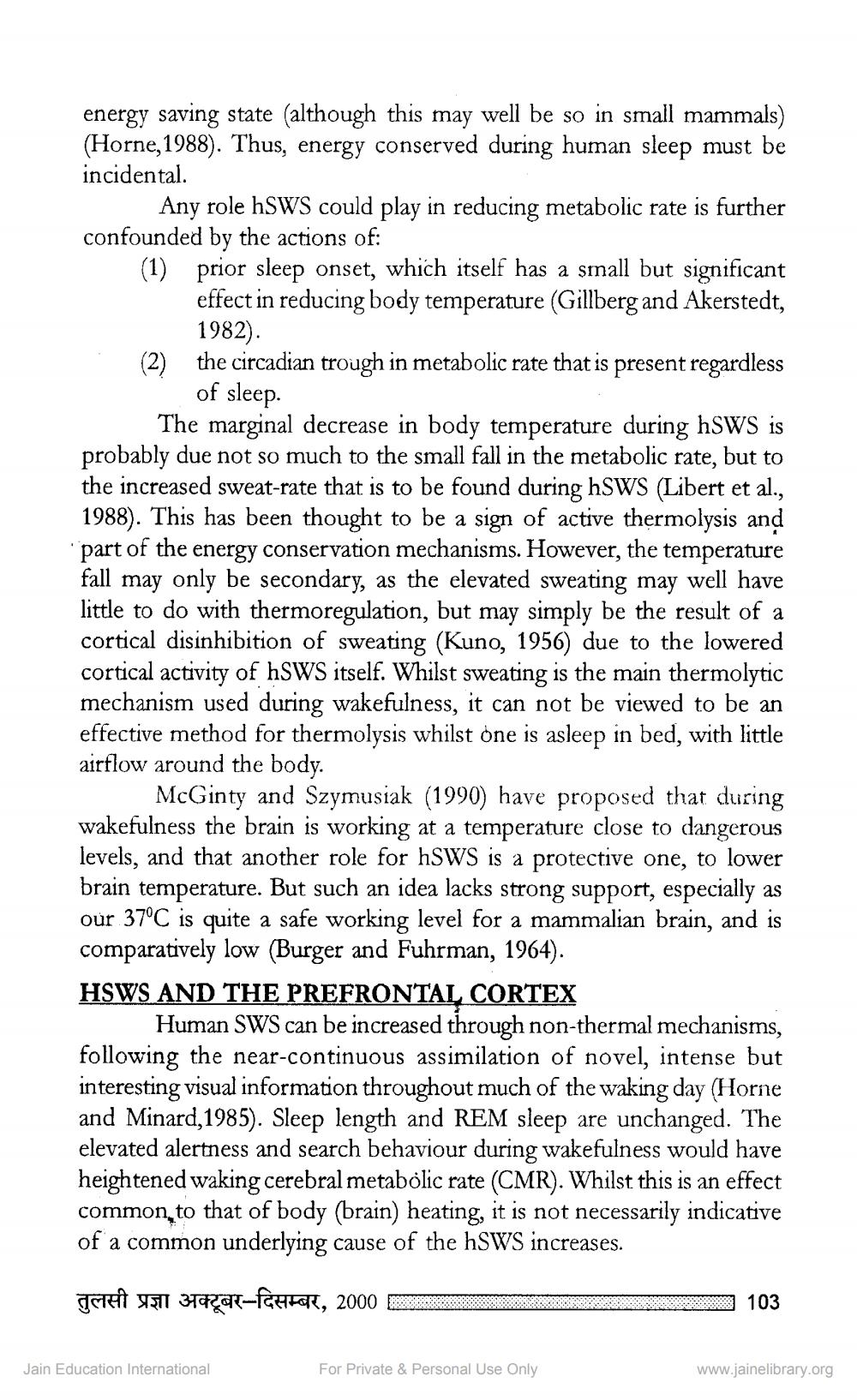________________
energy saving state (although this may well be so in small mammals) (Horne, 1988). Thus, energy conserved during human sleep must be incidental.
Any role HSWS could play in reducing metabolic rate is further confounded by the actions of:
(1) prior sleep onset, which itself has a small but significant effect in reducing body temperature (Gillberg and Akerstedt, 1982).
(2) the circadian trough in metabolic rate that is present regardless of sleep.
The marginal decrease in body temperature during hSWS is probably due not so much to the small fall in the metabolic rate, but to the increased sweat-rate that is to be found during hSWS (Libert et al., 1988). This has been thought to be a sign of active thermolysis and part of the energy conservation mechanisms. However, the temperature fall may only be secondary, as the elevated sweating may well have little to do with thermoregulation, but may simply be the result of a cortical disinhibition of sweating (Kuno, 1956) due to the lowered cortical activity of hSWS itself. Whilst sweating is the main thermolytic mechanism used during wakefulness, it can not be viewed to be an effective method for thermolysis whilst one is asleep in bed, with little airflow around the body.
McGinty and Szymusiak (1990) have proposed that during wakefulness the brain is working at a temperature close to dangerous levels, and that another role for hSWS is a protective one, to lower brain temperature. But such an idea lacks strong support, especially as our 37°C is quite a safe working level for a mammalian brain, and is comparatively low (Burger and Fuhrman, 1964).
HSWS AND THE PREFRONTAL CORTEX
Human SWS can be increased through non-thermal mechanisms, following the near-continuous assimilation of novel, intense but interesting visual information throughout much of the waking day (Horne and Minard,1985). Sleep length and REM sleep are unchanged. The elevated alertness and search behaviour during wakefulness would have heightened waking cerebral metabolic rate (CMR). Whilst this is an effect common to that of body (brain) heating, it is not necessarily indicative of a common underlying cause of the HSWS increases.
तुलसी प्रज्ञा अक्टूबर-दिसम्बर, 2000
Jain Education International
For Private & Personal Use Only
103
www.jainelibrary.org




